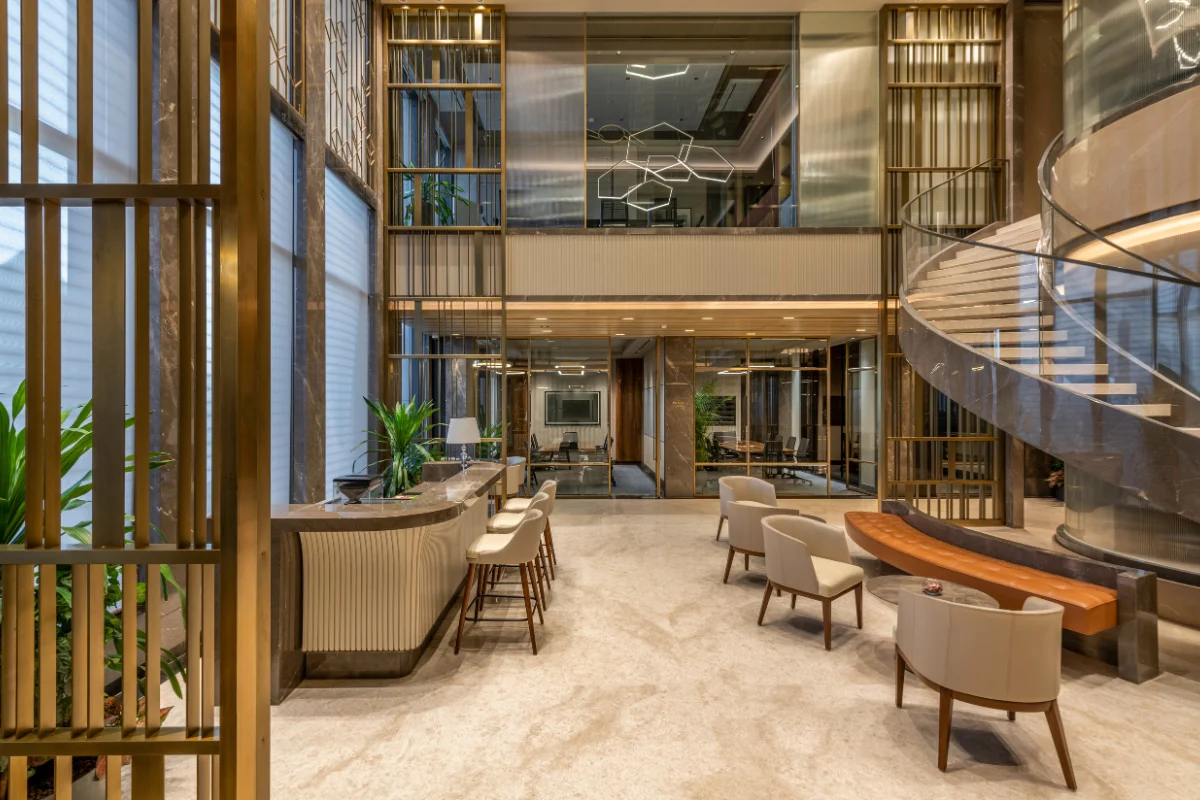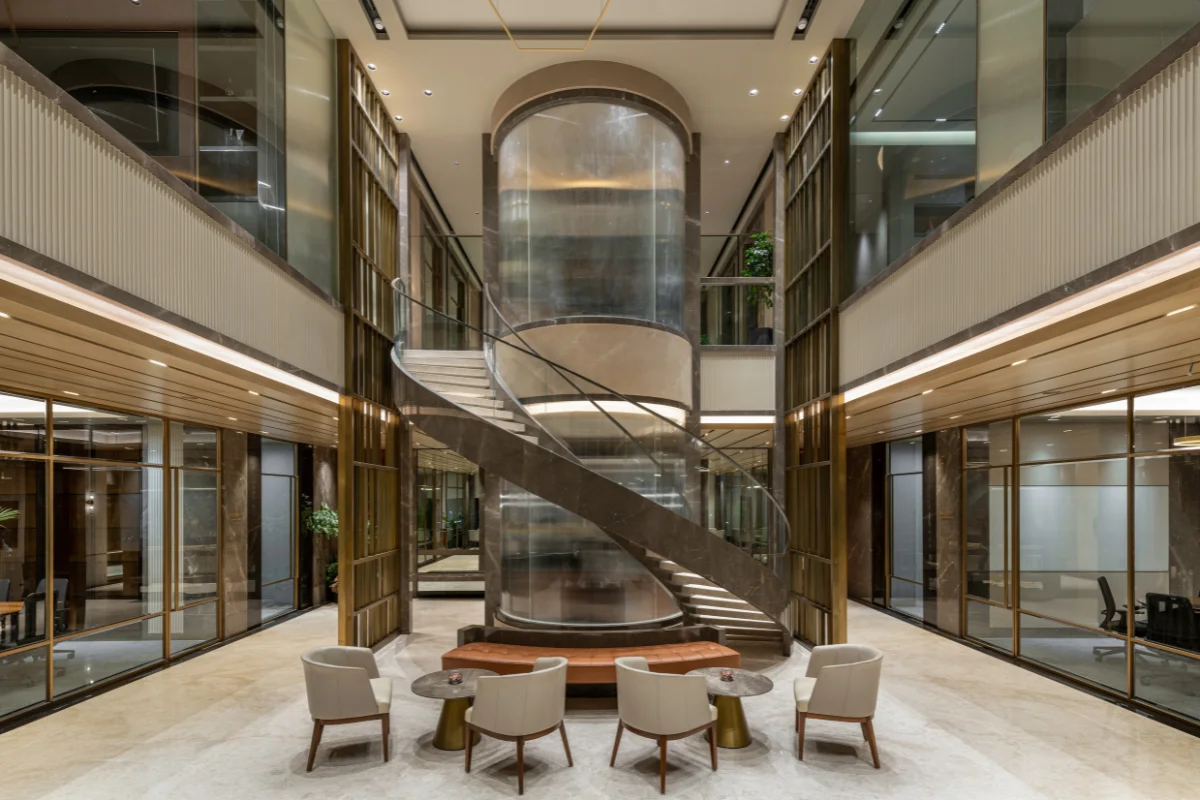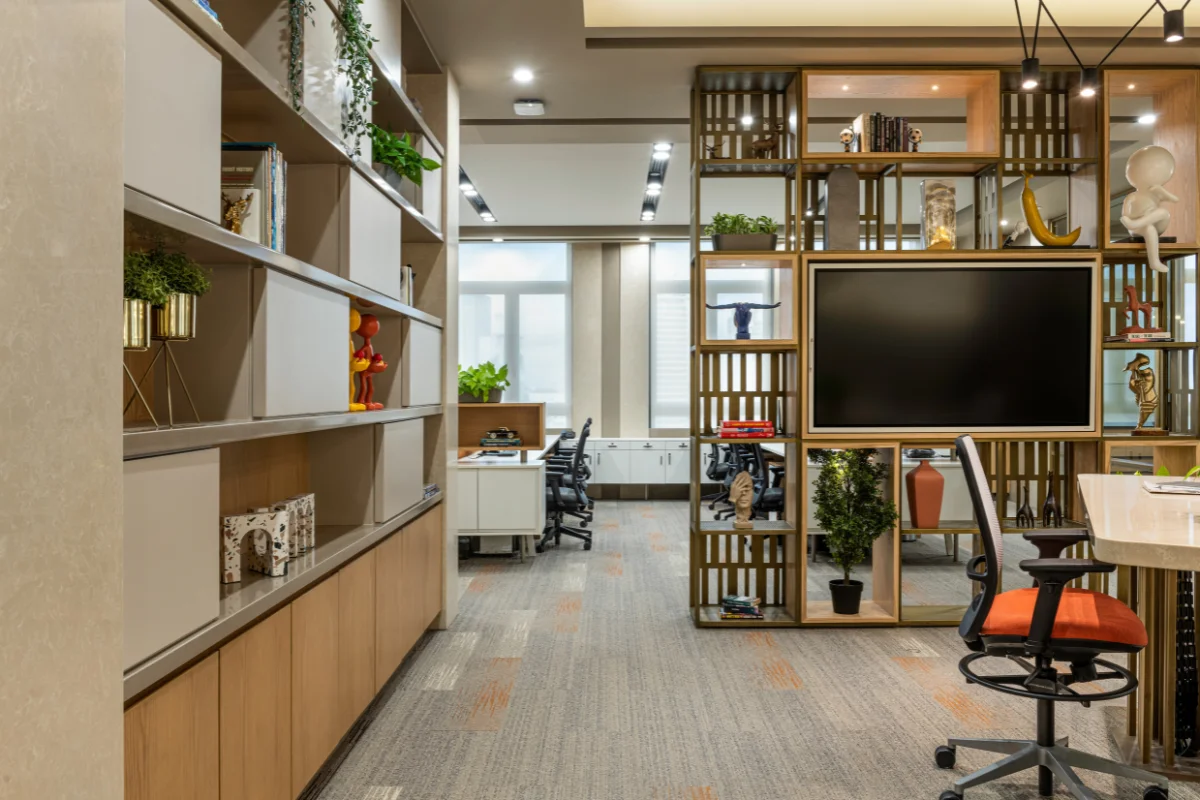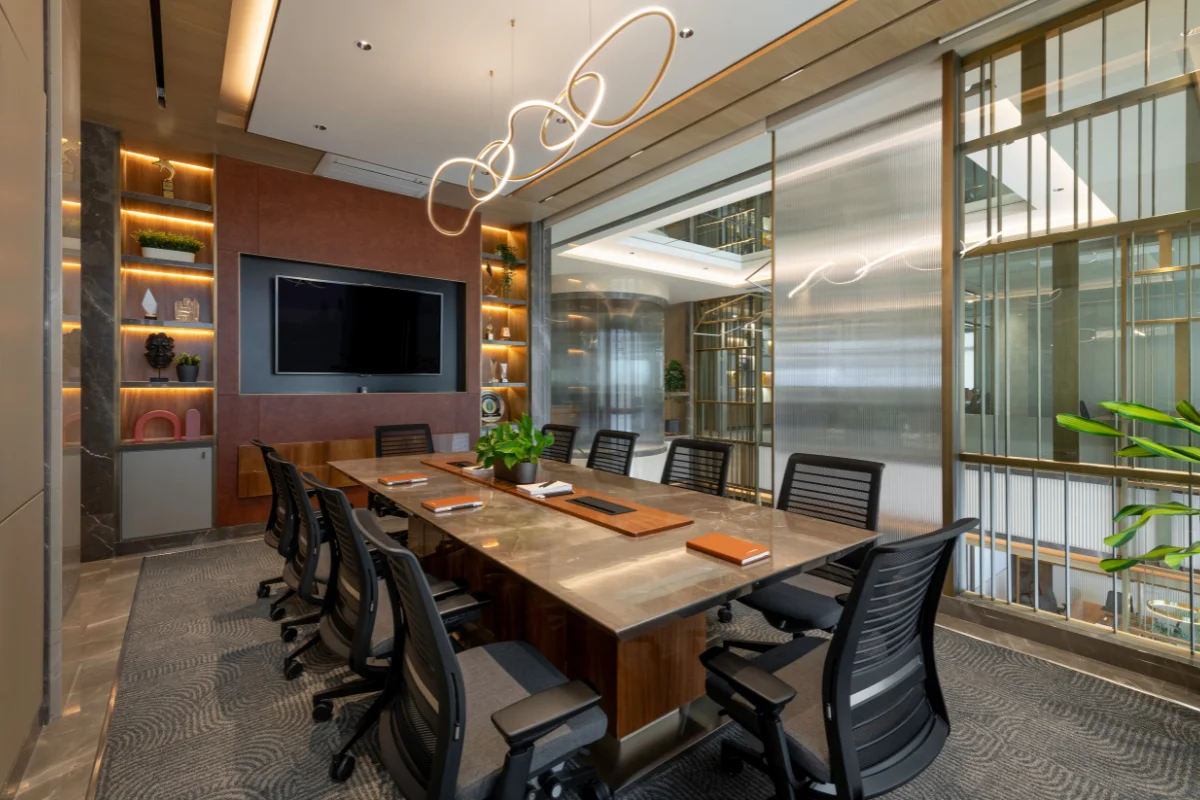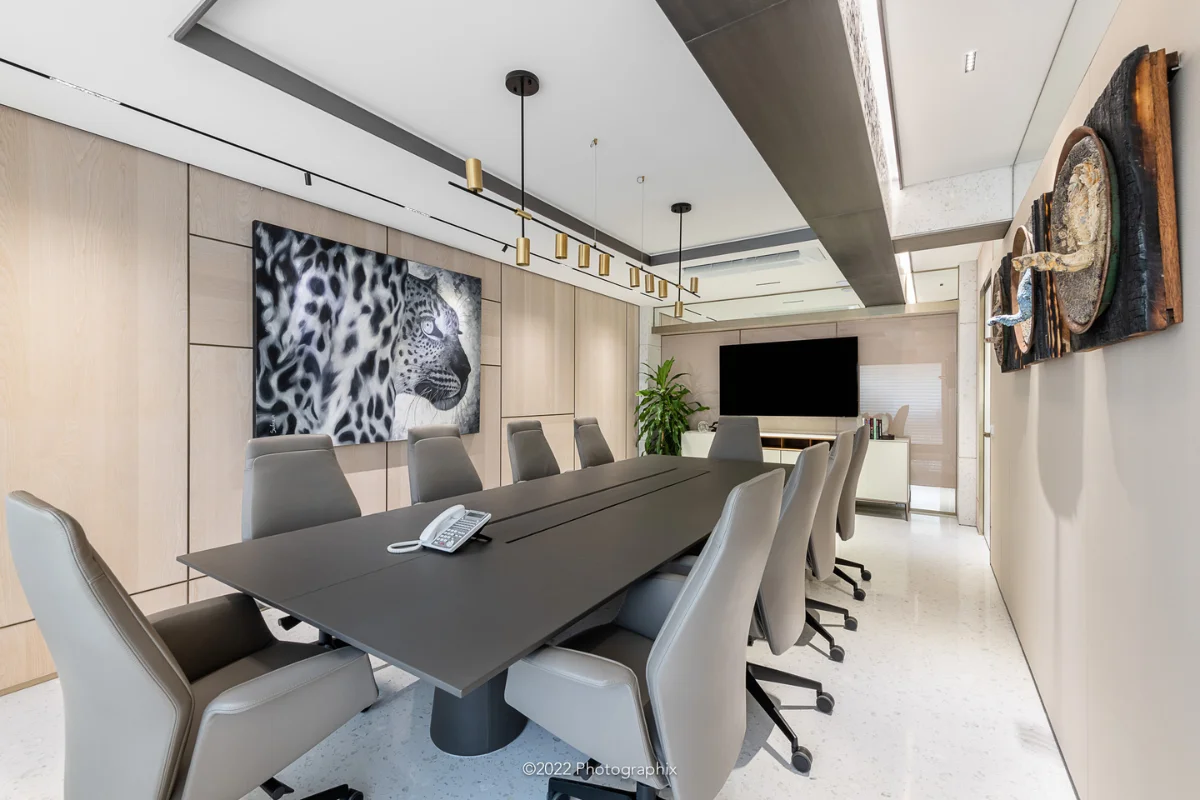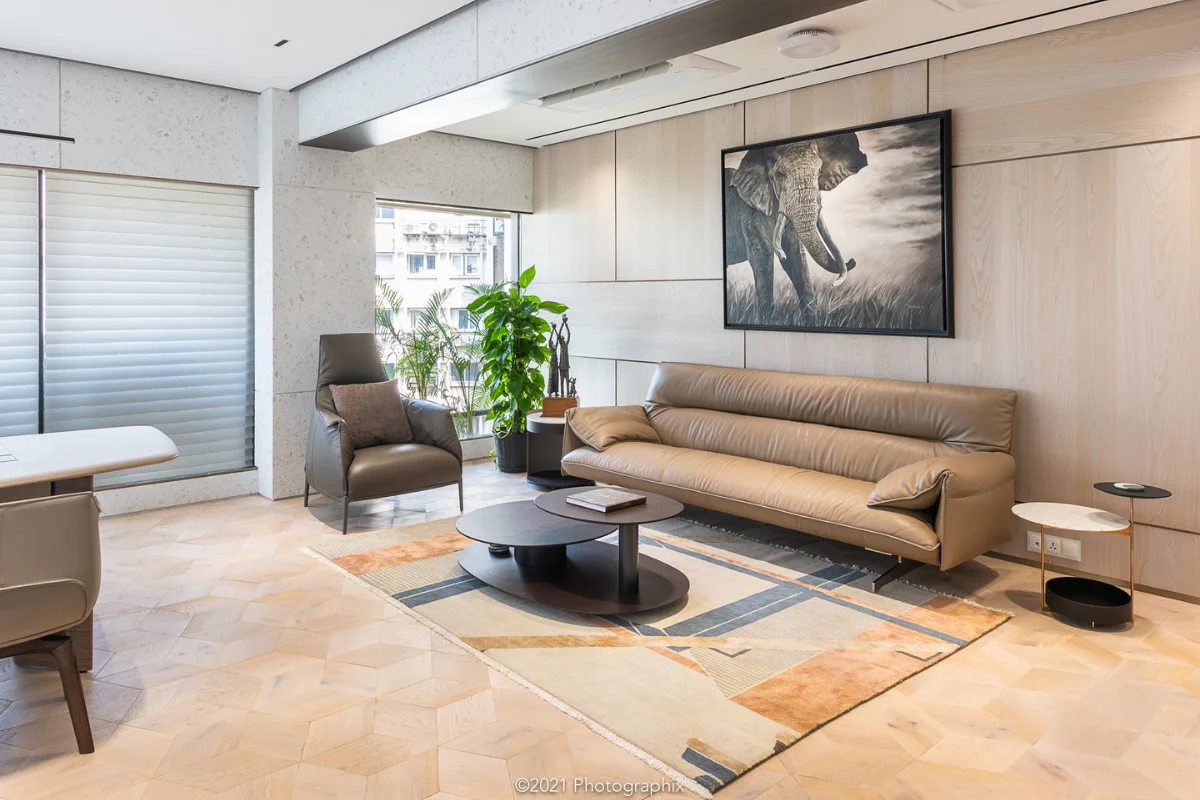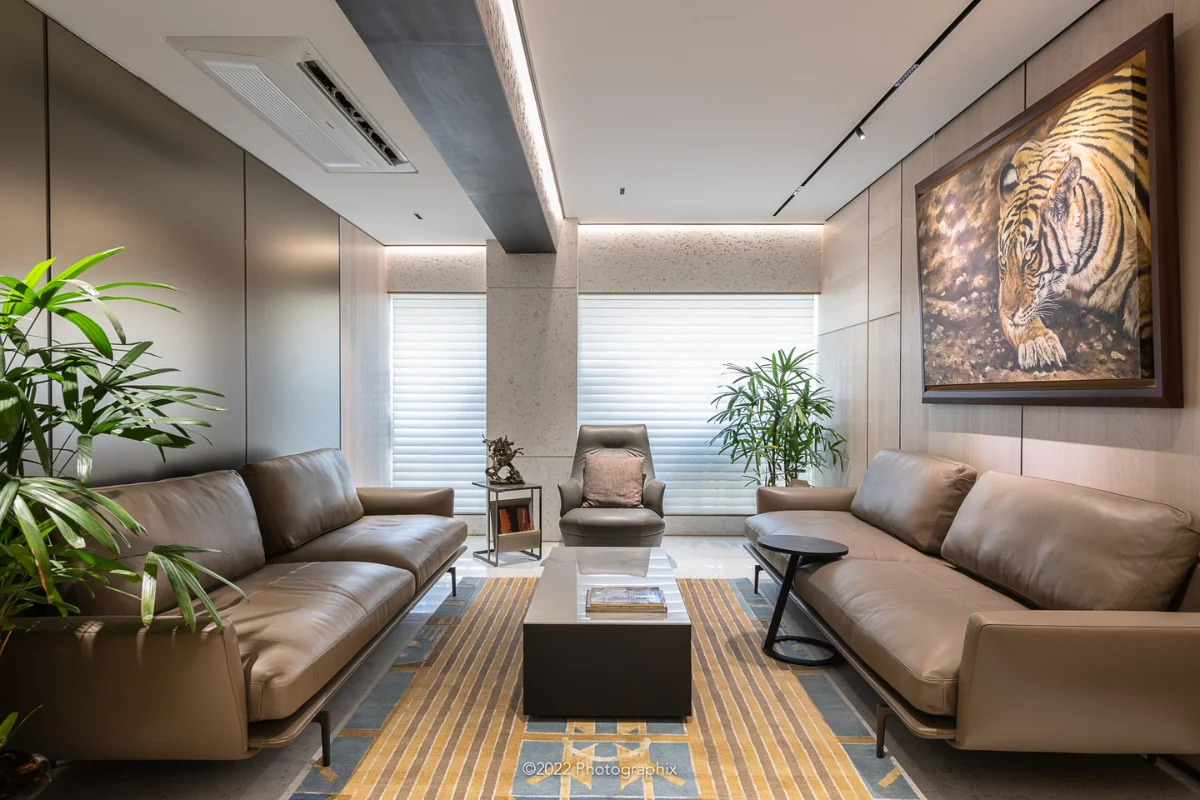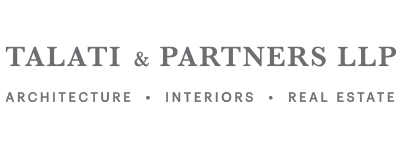What if your brand could speak even before you did? Through the walls, textures, furniture, and layout. Well, it can!
“Architecture is the will of an epoch translated into space.” —Ludwig Mies Van Der Rohe
Today’s evolving corporate environments serve as strategic assets for internal office branding, enhancing employee engagement and external perception. Office interiors affect first impressions, cultivate workplace culture, and elevate brand communication.
Every space of the office is crucial to your business’s visual storytelling. P. Kotler, in his literature on Marketing Management, discusses how branding is not limited to promotions but further shapes internal narratives that drive motivation and unity among those associated with the brand. Studies show that connecting your brand to visual features leaves a prolonged impact on the psychology of the viewer, where they associate with the brand based on those features.
A modern office interior design requires precise alignment with the brand’s visual identity factors. The design considerations for such a design consist of brand colours, logos, and materiality. Details in spatial design, such as enclosed, semi-open, or open spaces, reflect the organisational structures for the office. Firms with a hierarchical structure can be represented with enclosed spaces, while creative companies may use open-plan layouts to encourage collaborative working.
Key considerations for interior space layouts in an office design are:
• Brand Guidelines
Reinforce brand identity with consistent and strategic use of associated colours and materials.
• Space Planning
Open layouts are highly compatible with enhanced collaborative working, whilst enclosed spaces reinforce hierarchy in the office structure.
• Design Elements
Furniture, lighting, and finishes contribute to the brand’s physical presence.
• Key Touchpoints
Reception areas, meeting rooms, lounges, and signage provide branding opportunities.
These ideas in interior design for corporate office branding support strategic business goals and enhance the visitor and user experiences.
• Architectural Grandeur:
The 26-foot-high office space is adorned with fluted marble, creating an elegant first impression.
• Material Sophistication:
Luxury is designed with elements such as bevelled glass, crystal chandeliers, and premium wood panelling.
• Strategic Spatial Zoning:
Avighna is strategically designed to balance formal and informal zones. The planning offers flexibility and maintains a sense of exclusivity.
• Sculptural Elements:
The design is brought together by adding a dynamic element of central attraction, a striking spiral staircase. This staircase functions as a transitional space and a sculptural centerpiece.
• Precision in detailing:
By adding tasteful textures, ambient lighting, and high-quality finishes, an immersive atmosphere can be created.
• Brand-centric aesthetics:
Organisational values, industry requirements, and brand aesthetics have been aligned in the interior and integrated in the design via furniture and spatial arrangements.
• Adaptability across scales:
Whether for a multinational corporation or an emerging enterprise, their design approach ensures brand storytelling remains consistent, regardless of space constraints.
Through these projects, Talati and Partners demonstrate an ideal approach towards a modern office interior design. They aim to develop spaces which are more than just a workspace; it is a strategic brand asset, influencing perception, engagement, and corporate identity.
“The details are not the details. They make the design.” —Charles Eames
The physical environment of an office contributes to brand communication and corporate identity. Certain elements play a crucial role in dominating this identity visually, such as:
• Furniture choices:
While a professional firm will align closely with a formal setting, offices in creative fields should opt for flexible arrangements.
• Colour psychology:
A colour palette derived from the brand colours establishes a firm brand identity.
• Visual branding:
Graphic walls, digital displays, and vision boards enhance messaging.
• Sector-specific aesthetics:
Modifications in the interior design styles that relate closely to the industry demands. For example, a minimalist aesthetic for tech firms, whilst a classic for the law firms.
These elements create workspace designs that function as brand ambassadors for businesses.
The difference between an office space and a well-designed office space can be determined by the quotient of employee engagement and the impact of internal branding. The Journal of Corporate Real Estate highlights the pros of a well-designed office interior. It observes to affects morale, retention, and productivity of the employees. The benefits of a good design in office interior can be listed as follows:
• Instils pride and belonging:
Induces a connection between the employee and the company’s mission.
• Enhances internal communication:
Reinforces core values through visual cues.
• Improves visitor confidence:
Establishes a brand credibility for clients, partners, and visitors.
Office interiors align with the objectives of internal marketing when a cohesive and inspiring work culture is promoted.
Segregating public, semi-public and private spaces such as academic zones, residences, and recreational spaces ensures fluid connection between the spaces.
Ready to redefine your workspace? Let your office do the talking!
